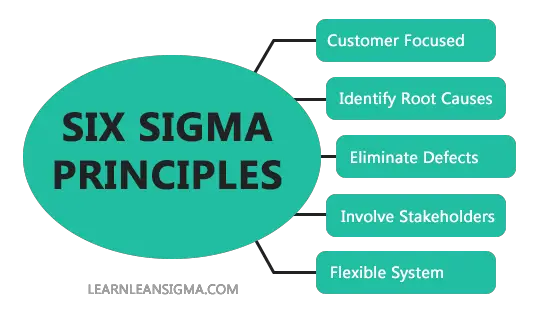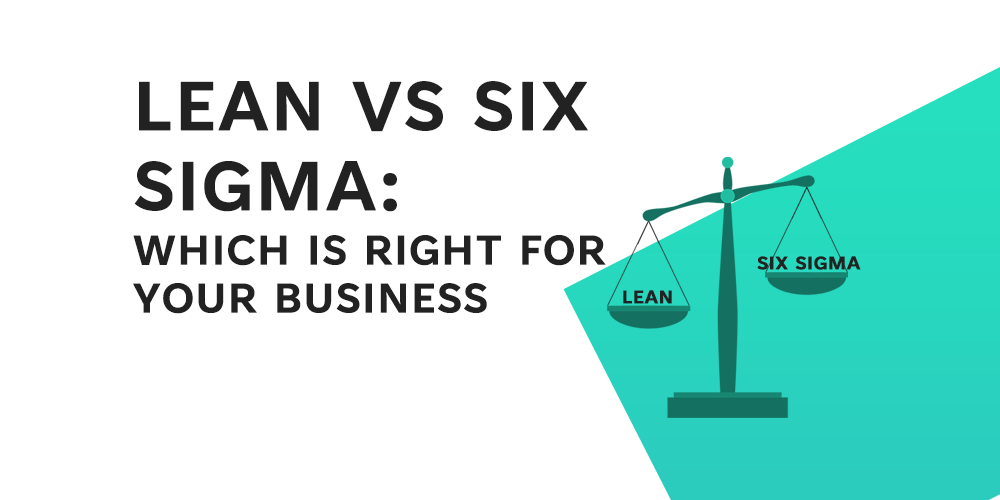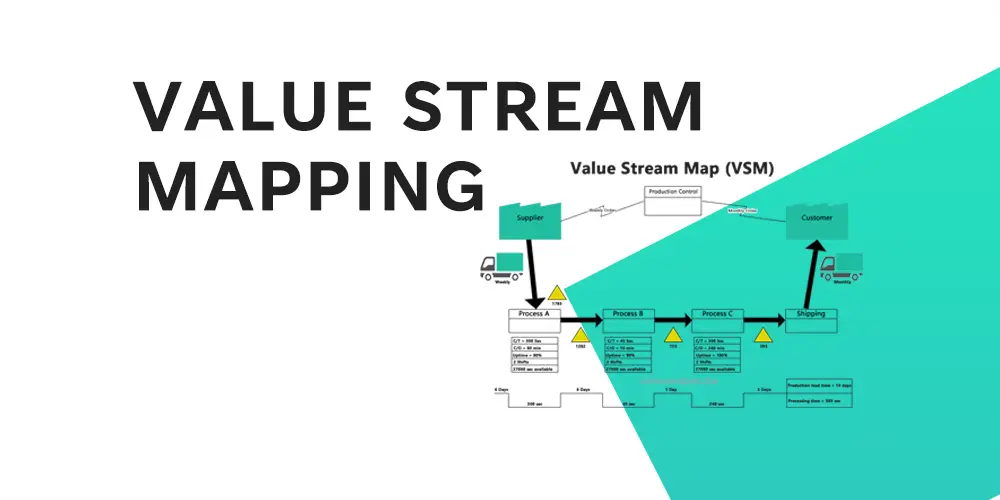Organizations in today’s competitive business landscape are constantly looking for ways to improve their processes, reduce costs, and increase efficiency. Lean and Six Sigma are two of the most popular methodologies for achieving these objectives. Both methodologies have been shown to be effective in a variety of industries, but how do you know which one is best for your company?
Choosing the right methodology can be a difficult task, and making the wrong decision can be detrimental to your business. In this blog post, we will give you a comprehensive overview of the Lean and Six Sigma methodologies, as well as their benefits and differences. We will also discuss factors to consider when deciding between the two methodologies and provide recommendations on how to integrate the chosen methodology into the processes of your business. By the end of this post, you will have a better understanding of which methodology is best for your company and how to successfully implement it.
Understanding Six Sigma Methodology
What Six Sigma Entails
We’ll start by explaining what Six Sigma methodology entails, which will lay the groundwork for understanding its benefits and applications.
Six Sigma is a data-driven process improvement methodology that aims to reduce defects and variation in business processes. It entails a rigorous problem-solving approach that employs statistical tools and techniques to identify the root cause of problems and implement solutions to eliminate them. Six Sigma methodology is based on the DMAIC (Define, Measure, Analyze, Improve, Control) process, which is a structured approach to problem solving.
Benefits of Six Sigma
Businesses that successfully implement Six Sigma methodology reap numerous benefits. Here are some of the main advantages:
- Improved quality: Six Sigma assists businesses in improving the quality of their products or services by reducing process variation and identifying the root cause of defects. As a result, there may be fewer customer complaints, higher customer satisfaction, and increased customer loyalty.
- Increased efficiency: Six Sigma aims to streamline processes and eliminate waste, resulting in improved efficiency and productivity. This can result in shorter delivery times, shorter cycle times, and better resource utilisation.
- Cost savings: Six Sigma can help businesses save money by eliminating waste and improving efficiency. This can lead to higher profits and a competitive advantage in the market.
- Increased customer satisfaction: Six Sigma can assist businesses in increasing customer satisfaction by improving product or service quality and reducing defects. As a result, customer loyalty and positive word-of-mouth referrals may increase.

Six Sigma is widely used in a variety of industries, including manufacturing, healthcare, finance, and service. Six Sigma has been used in manufacturing to reduce defects and improve quality control. Six Sigma has been used in healthcare to improve patient safety and reduce medical errors. Six Sigma has been used in finance to improve transactional processes and reduce errors in financial reporting. Six Sigma has been used in the service industry to improve customer service and reduce response times.
Examples of Industries using Six Sigma
Let’s look at some specific examples of how Six Sigma methodology has been used in various industries:
- Manufacturing: Six Sigma has been used to improve product quality and reduce defects in manufacturing processes. This was accomplished by employing statistical tools and techniques to determine the root cause of defects and implement solutions to eliminate them. Six Sigma has also been used to improve efficiency and lower costs by optimising production processes and reducing waste.
- Healthcare: In healthcare, Six Sigma has been used to improve patient safety and reduce medical errors. This was accomplished by utilising data analysis and process improvement tools to identify the root cause of errors and implement solutions to prevent them from recurring in the future. Six Sigma has also been used to improve patient satisfaction by optimising healthcare processes and reducing wait times.
- Finance: Six Sigma has been used in finance to improve transactional processes and reduce errors in financial reporting. This has been accomplished by utilising process improvement tools to streamline financial processes and reduce the possibility of errors occurring. Six Sigma has also been used in the finance industry to improve customer service, resulting in increased customer satisfaction.
- Service industries: Six Sigma has been used in service industries to improve customer service and reduce response times. This was accomplished by utilising process improvement tools to streamline customer service processes and reduce wait times. Six Sigma has also been used to optimise service delivery processes, resulting in improved efficiency and reduced costs.
Understadning Lean Methodology
What does Lean Entail
Lean manufacturing, also known as lean methodology, is a business strategy that focuses on maximising value while minimising waste. It originated in the manufacturing industry but has since spread to a variety of industries such as healthcare, finance, and service. The goal of Lean methodology is to identify and eliminate non-value-added activities in a process while continuously improving it to increase efficiency and effectiveness.
Lean methodology is based on five fundamental principles:
- Value: A strong emphasis is placed on identifying the value that a process or product provides to the customer.
- Value Stream: The value stream is the set of activities required to create a product or service. The goal of lean methodology is to find and eliminate non-value-added activities in the value stream.
- Flow: Lean methodology focuses on creating a smooth, continuous flow of work through the value stream.
- Pull: The goal of Lean methodology is to create a pull system in which products or services are produced only when they are required, rather than in anticipation of demand.
- Continuous Improvement: The Lean methodology is based on the concept of continuous improvement, also known as Kaizen. This entails looking for ways to improve the process and eliminate waste on a regular basis.

What are the benefits of lean
Businesses that successfully implement lean methodology reap numerous benefits. These advantages include:
- Improved quality: Lean methodology assists businesses in improving the quality of their products or services by focusing on value and eliminating waste.
- Increased efficiency: The goal of lean methodology is to streamline processes and eliminate waste, which leads to increased efficiency and productivity.
- Cost savings: Lean methodology can help businesses save money by eliminating waste and improving efficiency. This can lead to higher profits and a competitive advantage in the market.
- Increased customer satisfaction: Lean methodology can help businesses increase customer satisfaction by improving product or service quality and reducing lead times.
Explains of industires using Lean
Lean methodology has been applied successfully in a variety of industries, including:
- Manufacturing: Lean methodology was developed in the manufacturing industry to improve efficiency, reduce waste, and improve product quality.
- Healthcare: Lean methodology has been used in healthcare to improve patient care, decrease wait times, and eliminate waste in healthcare processes.
- Finance: In the finance industry, lean methodology has been used to streamline processes and reduce waste, resulting in increased efficiency and lower costs.
- Service industries: Lean methodology has been used successfully in service industries such as hospitality and transportation to improve customer service, reduce wait times, and optimise service delivery processes.
Overall, the Lean methodology provides a robust set of tools and techniques for businesses seeking to improve their processes and achieve operational excellence. Its emphasis on value and waste elimination, combined with a mindset of continuous improvement, make it a valuable strategy for businesses in a variety of industries.
Differences between Lean and Six Sigma
What are the key differences
While both Lean and Six Sigma aim to improve processes and achieve operational excellence, the two methodologies have some key differences. Among the key distinctions are:
Focus: The primary focus of Lean methodology is to improve efficiency and eliminate waste, while Six Sigma methodology aims to reduce defects and variability in a process.
Tools: To improve processes, Lean methodology employs tools such as value stream mapping, 5S, and Kaizen events, whereas Six Sigma methodology employs statistical analysis, process mapping, and root cause analysis.
Scope: Lean methodology focuses on the entire value stream and strives to improve work flow from start to finish, whereas Six Sigma methodology can be applied to a specific part of a process to improve quality and reduce defects.
Culture: Lean methodology emphasises a continuous improvement mindset as well as an empowerment and engagement culture, whereas Six Sigma methodology emphasises a data-driven and analytical approach to problem solving.

How Differences Between the two Methodologies can Impact a Businesses Decision Making Process
The differences between the Lean and Six Sigma methodologies can have a significant impact on the decision-making process in a business. For example, if a company’s primary goal is to improve efficiency and eliminate waste, Lean methodology may be the best approach. Six Sigma methodology, on the other hand, may be more appropriate if a company’s goal is to reduce defects and variability in a specific process.
Before deciding which methodology to implement, businesses must carefully consider their goals and objectives. A combination of Lean and Six Sigma methodologies may be most effective in some cases, as they can complement each other and provide a more comprehensive approach to process improvement.
Overall, the decision to implement Lean or Six Sigma methodology will be influenced by a number of factors, including the industry, the specific process being targeted, and the business’s goals and objectives. Businesses can make informed decisions and achieve meaningful improvements in their processes and operations by understanding the differences between the two methodologies and carefully considering their unique needs and circumstances.
Choosing the Right Method for your Business
Factors to Consider when Picking Between Lean vs Six Sigma
Businesses should consider several factors when deciding between the Lean and Six Sigma methodologies, including:
Goals and objectives: What specific goals and objectives is the company attempting to achieve? If the goal is to reduce variability and defects in a process, Six Sigma methodology may be more appropriate. If the goal is to eliminate waste and increase efficiency, Lean methodology may be the best option.
Industry and process: What industry does the company operate in, and what specific process is being improved? Some industries and processes may be better suited to Lean methodology, while others may require a more data-driven and analytical approach, such as Six Sigma.
Resources and capabilities: Does the company have the necessary resources and capabilities to implement a specific methodology? Six Sigma methodology, for example, frequently necessitates statistical analysis expertise and specialised software tools.
Organizational culture: Is the culture of the company conducive to the methodology chosen? Lean methodology, for example, emphasises a culture of continuous improvement and employee empowerment, whereas Six Sigma requires a more structured and data-driven approach.
Steps to Take when Deciding which Methodology is Right
When deciding which methodology is best for your company, it’s critical to consider the following factors:
- Determine the specific issue or process that requires improvement.
- Define the goals and objectives that the company wishes to accomplish.
- To determine which methodology is best suited for the business, consider the factors listed above.
- Create a plan for implementing the chosen methodology, including identifying the resources and timelines required.
- To ensure successful implementation, train employees on the methodology and provide ongoing support.
Recommendations on Integrating Lean or Six Sigma in your Business
The following recommendations should be followed to successfully integrate the chosen methodology into the business’s processes:
- Create an environment of continuous improvement and employee engagement.
- Identify key metrics for measuring the methodology’s success and tracking progress over time.
- Encourage cross-functional teams and collaboration to identify areas for improvement.
- Employees should receive ongoing training and support to ensure they have the necessary skills and tools to effectively implement the methodology.
- Regularly review and adjust the methodology as needed to ensure it continues to meet the business’s goals and objectives.
Businesses can achieve meaningful improvements in their processes and operations by carefully considering the factors listed above and following the recommended steps for implementing and integrating the chosen methodology, resulting in increased efficiency, lower costs, and improved customer satisfaction.
Conclusion
To summarise, both the Lean and Six Sigma methodologies can be extremely effective in improving business processes and achieving better results. While Lean methodology focuses on eliminating waste and maximising efficiency, Six Sigma methodology emphasises reducing variability and improving quality through data-driven analysis.
Businesses should consider their specific goals, industry and process, available resources and capabilities, and organisational culture when deciding between the two methodologies. Businesses can choose the right methodology and achieve meaningful improvements in their operations and outcomes by carefully weighing these factors and following the recommended steps for implementation and integration.
Finally, the choice between Lean and Six Sigma methodology will be determined by the specific situation and needs of each business. Businesses, on the other hand, can make informed decisions and take action to improve their processes and achieve their goals by understanding the core principles and benefits of both methodologies.








